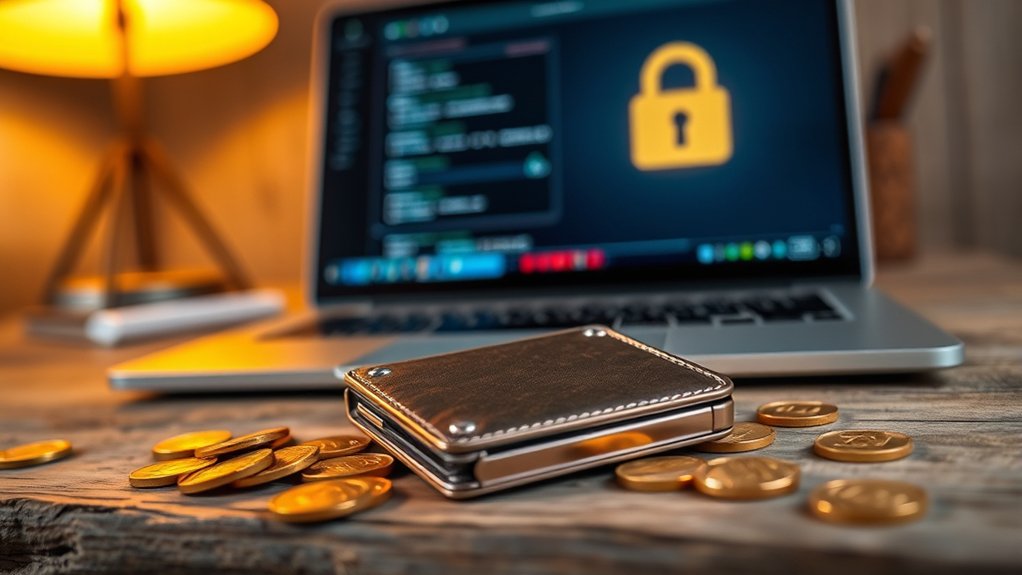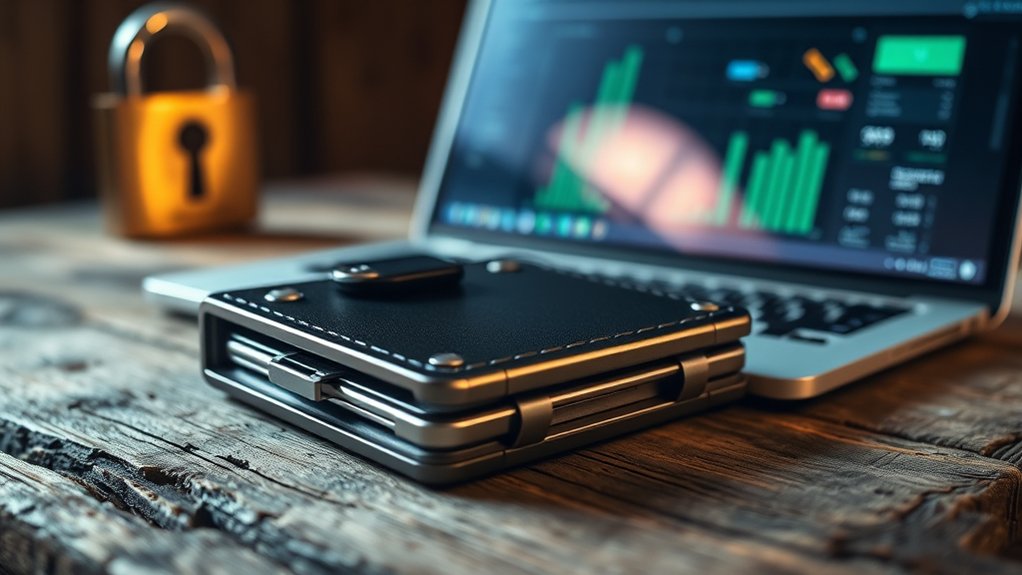Non-custodial crypto wallets let users control their funds. Sounds great, right? But hold on—this comes with serious responsibility. Forget your private keys? Bye-bye, cash. These wallets vary from mobile apps to Fort Knox-like hardware options, each with its security quirks. Phishing scams lurk everywhere, waiting for the careless. Plus, if you’re new, good luck steering through the complex stuff. It’s a wild ride in the crypto world, and there’s plenty more to uncover.

When it comes to managing cryptocurrency, many people discover that non-custodial wallets are the wild west of digital finance. It’s thrilling. It’s terrifying. And it’s all on you.
These wallets give users complete control over their private keys and funds, meaning no third parties are involved. Sounds great, right? But hold on. With great power comes great responsibility. Users must secure their keys like they’re guarding a treasure chest. Lose those keys or the seed phrase? Say goodbye to your funds—forever.
Complete control of your crypto comes with huge responsibility—lose your keys, and your funds vanish forever. Guard them fiercely!
Non-custodial wallets come in various forms: browser-based apps, mobile apps, and hardware wallets. Hardware wallets are like Fort Knox for your crypto, keeping your keys offline and out of hackers’ reach. They are considered the most secure option for long-term storage of assets. But remember, even the best vault needs a good lock. Physical protection is essential here. Additionally, users must have a solid understanding of key management to ensure their assets remain secure. Moreover, non-custodial wallets allow for better management of multiple assets, which can enhance user experience.
And don’t forget about phishing! Scammers are lurking, ready to snag your sensitive data.
Privacy? Oh, they’ve got that covered. Non-custodial wallets often don’t require personal information, giving users a cloak of anonymity. Transactions can be more private since users handle them directly. Want to dabble in decentralized finance (DeFi)? Go right ahead! These wallets let users stake, yield farm, and more—all without the annoying middleman.
But it’s not all rainbows and butterflies. There’s a learning curve, and it’s steeper than you’d think. New users face the challenging task of understanding private keys, seed phrases, and security protocols.
There’s no customer service to call when things go south. Users have to manually sign transactions and keep their wallet software up to date. If they mess up? Well, that’s on them.
In the end, non-custodial wallets are empowering yet challenging. They offer freedom and control, but the stakes are high. One mistake, and it could all be gone in an instant. Welcome to the wild west.
Frequently Asked Questions
What Are the Key Differences Between Custodial and Non-Custodial Wallets?
Custodial wallets are like handing your money to a friend and hoping they don’t go on a shopping spree. They manage your keys, but you lose control.
Non-custodial wallets? They’re the opposite—it’s all you, baby. You hold the keys, but if you lose them, good luck.
Security? Custodial wallets can get hacked; non-custodial wallets rely on your smarts.
It’s convenience versus control. Choose wisely—because there’s no do-over in crypto.
How Do I Recover My Funds if I Lose My Wallet?
Losing a wallet? That’s a headache. First off, good luck recovering those funds!
If you’ve got a seed phrase, you might be in luck. But if not, you’re pretty much out of options.
Checking for backups? Sure, but don’t hold your breath. You could try contacting support or even a professional service, but they’re not miracle workers.
Basically, keep backups safe. Otherwise, those funds could be gone forever. Sorry, not sorry!
Are Non-Custodial Wallets Safe From Hacking?
Non-custodial wallets? They’re not exactly a hacker’s playground, but they’re not Fort Knox either.
Sure, they give users control over their keys, which feels empowering. But if you misplace those keys? Game over.
And let’s not forget phishing scams lurking around every corner. While they can be safer than custodial options, nothing’s foolproof.
Users need to stay sharp and keep their heads in the game. Otherwise, it’s a one-way ticket to Lossville.
Can I Use Multiple Non-Custodial Wallets Simultaneously?
Sure, you can totally use multiple non-custodial wallets at the same time.
It’s like having a bunch of piggy banks. Each one can hold different coins, and you can manage them however you want.
Just keep in mind, though—it’s on you to remember all those passwords and recovery phrases.
Mess that up, and poof, your assets might vanish.
What Cryptocurrencies Are Supported by Non-Custodial Wallets?
Non-custodial wallets are like a buffet for cryptocurrencies. They support a ton of options.
MetaMask loves Ethereum and its buddies. Trust Wallet? It’s got over 35 blockchains. MyEtherWallet sticks to Ethereum, while Coinomi is a massive player with over 1,770 assets.
Specialized wallets? Phantom is all about Solana, and Electrum is strictly for Bitcoin purists.





